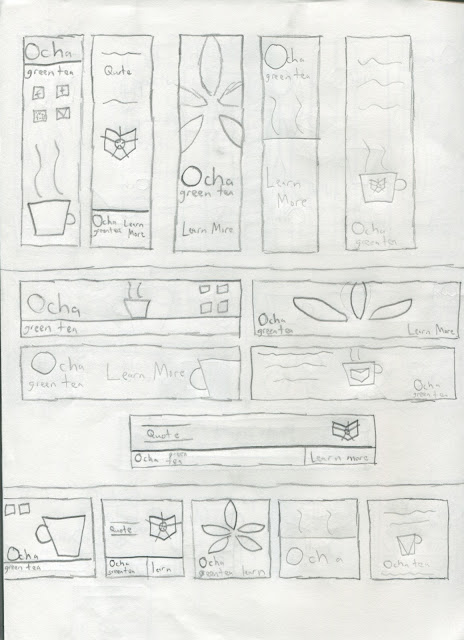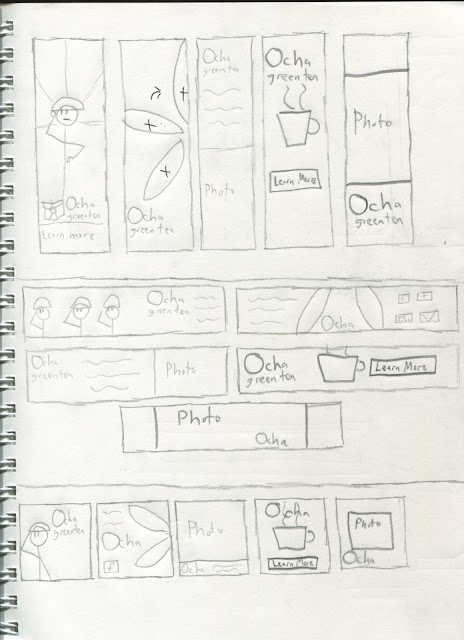While looking around on the internet, I found this article about internet advertising. I thought that some of the points could be used for making my web flashes, so I've included it below:
Internet Advertising Is Like Selling the Steak…Not the Sizzle.
By Borcz:Dixon
There's an old marketing adage: "Sell the sizzle, not the steak." In pay per click, when using keywords, you want to do just the opposite.
Well, if you're selling anything, you had better pay attention to the "sizzle." In today's market, your potential prospects have one thing in mind. "What's in it for them," and if you're into sales, you must realize this. While the "nuts and bolts" of your product or offer are important, that is not normally what gets someone's initial interest and makes the sale. BUT - here's the most important point if you want to be successful with search engine marketing - Google ONLY cares about the "nuts and bolts" - the steak!
Why it's true that people don't buy products or services. They buy benefits. In the advertising arena, this tends to be the mantra — but online, Google's search engine results pages (SERPs) deliver information specific to keywords — all without the sizzle. When's the last time you visited a store and asked a sales person where you could find the "brand new designed, fresh and environmentally friendly best...?" Consider Google the sales person that immediately cuts to the chase...Regardless of what you're selling, in order to sell effectively, you have to sell both the sizzle and the steak in combination. The sizzle (or benefits) will help you get attention through AdWords textural ads; the steak (or the keywords as they relates to the product) allow for Google indexing and high-ranking.
Search engines behave like people.
- They like web sites WHICH contain substantive information about a certain topic.
- The best sites usually appear first in search engines because people like them as well as the search engines.
- Unless your site is near the top of the search results, customers are not likely to see your listing or to learn about your business.
- 62 percent of searchers click on a link within the first page of results
Search engines are really indicative to the behavior of the people who visit the website.
- Search engines segment the market and connect the right people together.
- People search for topics that they are interested in
The power of the search engine should not BE underestimated.
- One of the building blocks of the foundation of the Internet.
- The use of the SEARCH engine to be able to reach one's target audience one of the most effective Internet marketing strategies
- SEO is 6-times more effective than banner ads
- SEO delivers qualified leads
- 90% of internet user sessions begin at search engines
- 55% of online purchases are made on sites found through search engine listings
- Google, the dominant player in the search engine industry, generates 70% of all search-related Internet activity.
Search engine optimization aims TO achieve the goal of getting more visitors to a website
- By helping it get higher rankings in the search engines.
There are two ways to be able to get noticed by search engines.
- The first way of increasing search traffic is by GETTING high rankings from search engines through optimization.
- The second way of increasing traffic through search engines is by GETTING high placement from search engines through pay-per-click-advertisements.
Choosing niche keywords that are relevant to the audience is key.
- What are they typing into search engines to find your products and services?
- The right keywords are: relevant to the business -AND- popular with searchers.
- Using generic two-word keywords that are common in your industry are not likely going to get result listings on page ONE in Google, especially if there are many competitors.
- They must be aggressively incorporated into the specific landing page as if the landing page were the ONLY page on the entire website.
But to be found for the right words on any site, you must undergo regular, extensive keyword research.
- To understand what words people use when they search for specific goods and services.
- Understand how many searches are taking place for targeted words and phrases
- Evaluate the size and competitiveness of specific keyword markets (w/respect to the keywords).
On the internet, “the whole is greater than the sum of the parts.”
- A page might not get ranked on every keyword put forth.
- The point is consistency overall, and that more opportunities to rank higher aggregate for a higher ranking overall.
The MOST important consideration pertaining to SEO... Search engines do not rank WEBSITES.
- Rankings are based on INDIVIDUAL pages and the specific keyword-related content therein.
- Search engines recognize content and page ranking on a per-page basis only.
- It is vital that each and every page of a website be optimized for the specific content (or keywords) found within the page.
- This keyword-rich content is referred to as keyword density.
- Websites should be "optimized to be seen" by surfers — search engines assist with achieving this goal.
The strategy for writing term papers that communicate well is the same with search engines.
- Tell them what you're going to tell them (html tags and titles)
- Tell them (pages with keyword-rich content)
- Tell them what you just told them (tagged navigation and images)
Search engines evaluate this content by using what they call “spiders.”
- These programs scan (or crawl) the top-most portions of website pages collecting the ‘textural’ information about them
- Spiders analyze the information and pass it back to the search engine.
- It will lead to a website which is more organized and a website which contains substantive information to answer the search query.
Fortunately, the tried-and-true tactics still work. Google still loves:
- Topically relevant links from important sites
- Anchor text
- Keyword-rich title tags
- Keyword-rich content
- Internal hierarchical linking structure
This is the main arena of search engine optimization; utilizing a set of methods to be able to get search engines to list the website pages with high ranks:
The TITLE tag:
- Like the heading for a book chapter;
- Convey the message in about 40 to 150 characters;
- Keywords should ALWAYS be used in the TITLE tag.
META description tag:
- Allows page authors to determine how they would like each page described when the search engines display a page;
- Some search engines show the content in this tag as part of the search results; Description tag should be between 50 and 250 characters.
META keywords tag:
- The keywords used in this tag are not viewable in a Web browser;
- This is where keywords are inserted that are relevant to each page's content; Recommended size from 75 to 125 characters.
Page content
- Each page of the site should contain about 250 - 600 words of unique content with 4
- or 5 occurrences of the targeted keywords; this is called keyword-density; Use of no more than three keywords per page;
- Too many keywords in one place can hurt rankings.
ANALOGY: Suppose for a moment that a UPS delivery person arrived at the front desk of a large corporation only to find a note, “Please place the package in Bob's office.” Without a map of the office showing the location of Bob's office, the package wouldn't get delivered. Part of SEO is:
- Continually providing search engines with website 'Site Maps'
- To assist the spiders in collecting this data.
The easier it is for a spider to crawl a page (and site):
- The more likely the pages will be crawled -and -
- The more likely it will rank higher.
The second way of increasing traffic through search engine optimization:
- Is by GETTING high placement from search engines through pay-per-click-advertisements;
- Depending on how the keywords relate to the content, the highest bidders' ads will appear;
- The more completely the search query is answered, the higher the placement on the results page.
Search engine optimization effortlessly COMPLIMENTS and empowers the PPC campaigns:
- The textural ads satisfy the search query more completely.
- Google rewards advertisers who provide more relevant data to satisfy the search query
With lower costs, and; Higher placement on the page; More cost-efficient delivery.
State right up front what your offer and how much it will cost. There is unconventional wisdom in that approach and it basically boils down to what you'll pay in clicks if you don't.
Remember that people will click your ad based on what you tell them in the headline and description. It pays to qualify the clicks before you pay for them. Your conversions will be higher and your out-of-pocket expenses will be lower. That will translate into higher revenues for you.
So the next time you write a PPC ad to drive traffic to a landing page, remember this: Every click is money out of your pocket, but not necessarily money in. Therefore, use your ad to qualify the clicks so that you don't have to pay for them later.
So...Long-and-short of it...Sell the sizzle or the steak?
So, should you sell the sizzle or the steak? Well, if you want your business to sell effectively, you should sell both. Attract attention by clearly stating the benefits of your offer, and then maintain and build interest by demonstrating the connection between your product and the benefits you're touting. Definitely sell the sizzle, but don't let marketing clichés make you afraid of telling people what it is that's sizzling away on the grill.



















